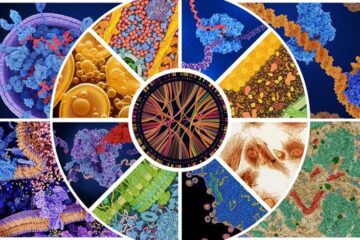World’s largest study on BRCA1/2 breast cancer gene testing criteria clarifies other cancer links

The largest population study ever done into the risk of cancer in families that fulfil the criteria for BRCA1 and BRCA2 mutation testing has confirmed that breast and ovarian cancers are the major concerns for geneticists and doctors counselling families. It has also verified that families eligible for BRCA1/2 mutation testing are at increased risk of pancreatic, prostate and stomach cancers.
One important conclusion of the study was that, in families with at least one woman with breast cancer and another woman with ovarian cancer, most ovarian cancers are not attributable to BRCA1/2 mutations. Other, as yet unknown, non-BRCA1/2 related factors are likely to increase the risk of ovarian cancer in those families.
The study, published today (Monday 15 November) in Annals of Oncology[1], utilised the 2002 update of the Swedish Family-Cancer Database, which contains everyone born in Sweden after 1931 with their biological parents – a total of 10.2 million people. Nearly 948,000 families with at least three generations were classified according to the clinical criteria proposed by the German Consortium for Hereditary Breast and Ovarian Cancer for testing of BRCA1/2 mutations.
The researchers – Dr Justo Lorenzo Bermejo and Professor Kari Hemminki – compared the cancer incidence in families eligible for BRCA1/2 mutation testing with the incidence in the general Swedish population. They used literature data to estimate the proportion of familial cancers unrelated to BRCA1/2 mutations.
Dr Lorenzo Bermejo, postdoctoral research fellow at the Department of Molecular Genetic Epidemiology at the German Cancer Research Center in Heidelberg, said: “The close to 100% histological verification of cancers in the database, its size and its coverage offered us a unique possibility to perform this analysis. Our objective was to assess the risk of cancer in high-risk breast/ovarian cancer families at a population level. Data about the risk in BRCA1/2 carriers are often contradictory, so a population-based data analysis in families eligible for BRCA 1/2 mutation testing may help to establish a consensus about the association of these mutations with cancer at sites other than the breast and ovary.
“This study has enabled us to confirm the association of these mutations with ovarian, pancreatic, prostate and stomach cancers in addition to breast cancer, but it has also shown that the clustering of early pancreatic cancer in families where there have been two breast cancers under age 50, the aggregation of ovarian cancer in families with breast and ovarian cancers and the increased incidence of early onset prostate cancer in families with male breast cancer seem to be due to other effects unrelated to BRCA1/2.”
“We need to identify the additional factors that account for this residual family aggregation,” said Prof Hemminki, Head of the Department of Molecular Genetic Epidemiology at the German Cancer Research Center and Professor at Karolinska Institutet in Sweden and at the Heidelberg University.
Key conclusions from the study:
- Breast and ovarian cancers are the major concern in clinical counselling of families that fulfil the clinical criteria for BRCA1/2 mutation testing;
- In families with bilateral breast cancer or two breast cancers before age 50, there is concern about early onset pancreatic cancer;
- Prostate cancers are also in excess in families with bilateral breast cancer or two breast cancers before age 50, although the risk is only moderate;
- Most cases of ovarian cancer in families with male breast cancer, and in families with at least two breast cancer diagnosed before age 50, are probably attributable to BRCA1/2 mutations;
- Other, non BRCA1/2 related effects are probably involved in the aggregation of ovarian cancer in families with breast and ovarian cancers.
Prof Hemminki and Dr Lorenzo Bermejo concluded: “The main message from our study for families which fulfil the criteria for mutation testing is that their risk for cancers other than breast and ovarian cancer is only moderate. The message for those involved in clinical counselling is that most ovarian cancers in families eligible for mutation testing are not related to BRCA1/2 mutations.”
[1] Risk of cancer at sites other than the breast in Swedish families eligible for BRCA1 or BRCA2 mutation testing. Annals of Oncology. Doi:10.1093/annonc/mdh474.
Media Contact
All latest news from the category: Studies and Analyses
innovations-report maintains a wealth of in-depth studies and analyses from a variety of subject areas including business and finance, medicine and pharmacology, ecology and the environment, energy, communications and media, transportation, work, family and leisure.
Newest articles

A universal framework for spatial biology
SpatialData is a freely accessible tool to unify and integrate data from different omics technologies accounting for spatial information, which can provide holistic insights into health and disease. Biological processes…

How complex biological processes arise
A $20 million grant from the U.S. National Science Foundation (NSF) will support the establishment and operation of the National Synthesis Center for Emergence in the Molecular and Cellular Sciences (NCEMS) at…

Airborne single-photon lidar system achieves high-resolution 3D imaging
Compact, low-power system opens doors for photon-efficient drone and satellite-based environmental monitoring and mapping. Researchers have developed a compact and lightweight single-photon airborne lidar system that can acquire high-resolution 3D…





















